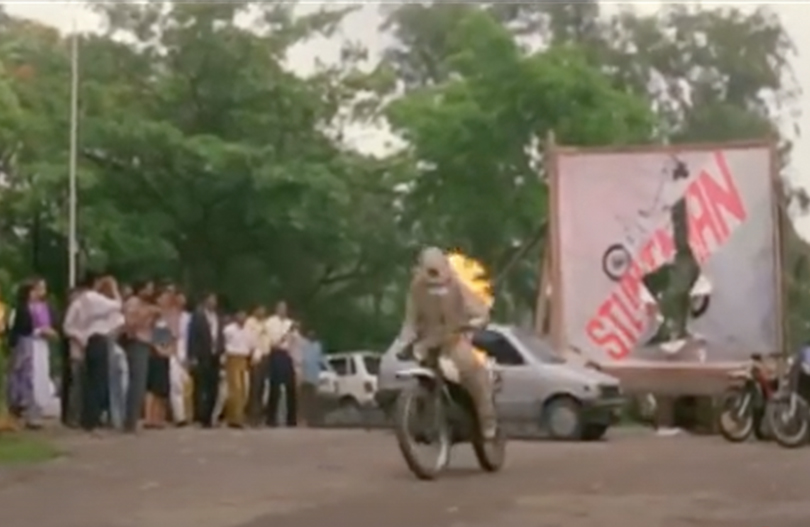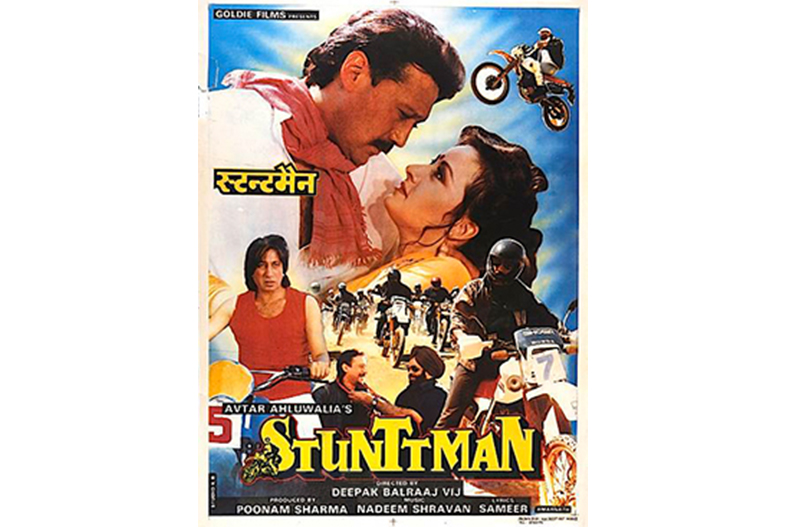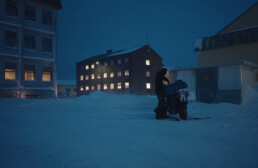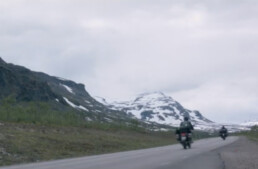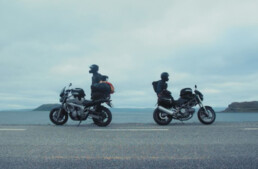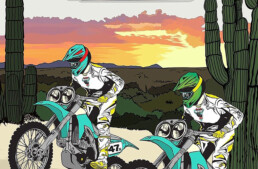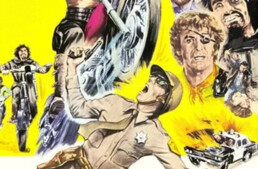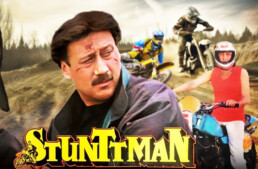The Vintagent Trailers: Sixth Street Specials
https://www.youtube.com/watch?v=Q1YwLwXKnAA&t=5s
The Vintagent Trailers: A preview of our favorite feature films out there.
SIXTH STREET SPECIALS (TBD)
Run Time: TBD
Producer: Antonio Polito
A Film By: Ezekiel Victor
Editor: Ezekiel Victor, Antonio Polito
Key Cast: Hugh Mackie, Joshua Mackenzie, Fumi Matsueda, Oliver Meechan
FILM MAKERS
Ezekiel Victor is a filmmaker from Asheville, currently splitting his time between there and Brooklyn. His Uncle used to own the motel and gas station at Deals Gap so some of my oldest memories are seeing bikes race up the hill at the entrance of the Dragon. His second birthday party was even motorcycle themed, giving motorcycles a very personal place in his heart.
The short film 'Sixth Street Specials' will premier at Kustom Kulture Fest, August 23-25 in Brooklyn, NY.
SUMMARY
I met Hugh in 2022 and fell in love with Sixth Street Specials. The Triumph sign, the parts, all the pictures and of course the bikes. It felt as if I was stepping into the world of On Any Sunday. I hope to share that same feeling of discovery through this project. Bruce Brown’s work alongside modern filmmakers and brands like Vahna, Rhythm, and Gimbal God have all provided a sense of freedom and peace for me over the years living in NYC. I think that’s something I hope to convey in the film as well. Hugh and his crew have been more than accommodating and generous with their time and space, I really could not ask for more, and being able to film them working day to day at the shop brought a lot of perspective and reality into what I had first experienced as a dreamlike fantasy, "working on bikes". It’s work, and I think much like a relationship, your true love is revealed in the monotony as much as the highs and lows. To me, that’s encouraging. It’s showing up, it’s getting it done and it’s not taking yourself too seriously.
Following the team to the race is when thing’s got real. Multiple people left in ambulances. There are guys over 80 years old still out there on the track, going faster sidewise than I ever have. I mean there is a 60+ year old class which to me says it all! Darryl Jakabowski, Sixth Street Racing rider (93B) even took a spill on Josh’s 1960’s brakeless Triumph. Once again, I felt like I was stepping into the world that Bruce Brown shot 50 years ago and meeting my heroes. I knew that Hugh was an incredible guy prior to the event, but you go to the races and hear nothing but admiration for him and the guys from everyone there. He’s the real deal. They’re the real deal. I am profoundly grateful to have had the opportunity to merely meet them and see a glimpse into their work and passion, let alone film it with my best friends. Which, this would not be a real project without my DP and cam op Nick Lavion, Producer and Co-editor Antonio Polito, Production Designer Luke Polihrom and Graphic Designer Haley Batson (who made a killer poster). Also, a special thanks to Yul Kim, Matthew Andreini and Demian Neufeld for supporting the project!
The film has been a dream come true for me. I hope people will watch it and get encouraged in their day to day work as much as they are about riding! Sixth Street has taught me it is those that show up everyday that make dreams come true. - Ezekiel Victor
RELATED MEDIA
Filmmaker website
Sixth STreet Specials IG @sixthstreetspecialsinc


The Vintagent Trailers: Hidden Away
https://vimeo.com/527879846
The Vintagent Trailers: A preview of our favorite feature films out there.
HIDDEN AWAY AKA VOLEVO NASCONDERMI (2020)
Run Time: 2:00:00
Producer: Palomar
Director: Giorgio Diritt
Writer: Giorgio Diritti, Fredo Valla, Tania Pedroni
Key Cast: Elio Germano, Oliver Ewy, Leonardo Carrozzoi
FILM MAKERS
Antonio Ligabue (Zurich 1899 - Gualtieri 1965) was an Italian painter and sculptor, among the most important Naive Art artists of the XX century. His art is chacterized by the force of the rural world that Ligabue came from and by the instinct of his madness.
Antonio Ligabue, whose real surname is Laccabue, was born in Switzerland in Zurich December 18, 1899. Son of an Italian emigrant, he was given up for adoption to a Swiss-German family who entrusted him in turn to an Institute for difficult children from where he was expelled at sixteen. Wild, unpredictable for his relationship with the world and reality, he was considered mad all his life. Expelled in handcuffs from Switzerland on complaint by his adoptive mother, he was routed to Italy, to Gualtieri, the paternal city. He worked until 1929 on the banks of the Po river, living like a savage in the woods and floodplains. At that time he began to paint and sculpt with clay more assiduously. In 1937, 1940 and 1945 he was interned in the Psychiatric Hospital of S. Lazzaro in Reggio Emilia for his irascible and violent character and for a "manic-depressive psychosis". In 1961 official recognition finally began, with an exhibition in Rome and a large anthology in Guastalla. Following a paresis Ligabue found himself immobile in a bed, while the fame of his works began to acquire a national dimension. He died at the Carri Hospital in Gualtieri May 27, 1965.
During his entire life he was mainly considered as a madman. Now everybody knows that Antonio Ligabue was one of the greatest painters of all time.
SUMMARY
Antonio is expelled from Switzerland to Italy against his will. For years he lives in poverty in the Po floodplains, but he never gives up his passion for drawing. The story of Antonio Ligabue, a revolutionary loner in modern art.
RELATED MEDIA
Read the The Vintagent article HERE.


The Vintagent Trailers: She Rides
https://www.youtube.com/watch?si=lXcgjhIo6BMGdnuq&v=uzECp9aojos&feature=youtu.be
The Vintagent Trailers: A preview of our favorite feature films out there.
SHE RIDES (TBD)
Run Time: TBD
Executive Producer: Sean Kelley
Producer: Rachel Lepley
Director: Gareth Maxwell Roberts
Key Cast: Moira Zinn, Addison Klink, Morgan Pillar
FILM MAKERS
Discover the groundbreaking impact of women in motorcycling with '
She Rides'. From breaking stereotypes to leading clubs and businesses, this film celebrates their resilience and innovation, shaping a future where the road knows no bounds.
In 2019 director Gareth Maxwell Roberts released the critically acclaimed award winning documentary feature film 'Oil In The Blood' about the contemporary custom motorcycle culture. He remembers “One of the most rewarding and fascinating aspects of making the film was meeting all of the inspiring women making inroads in a culture and industry that has historically been male dominated. We featured a chapter on women in motorcycling in the film, and at the time I certainly believed it was worthy of a film in its own right.” A few years later, that film is getting made. 'She Rides'.
SUMMARY
The film came into being from a chance conversation between Gareth and producer Sean Kelley of 73 Moto, and a weekend stop over In Austin, Texas by producer Rachel Lepley on her epic trip across the 48 states of the USA in 48 days on her Royal Enfield Interceptor. Conversations began with eventual associate producers Heidi Zumbrun and Kiki Azim and production was scheduled to begin in early 2024. Sarah and David Pagan joined the team and shooting commenced in February at the Mama Tried Show in Milwaukee.
They have since filmed a number of interviews in Texas and at The 1 Moto Show in Portland. To date the team has interviewed over forty women, from flat track racers to custom builders, dealership and workshop owners, show runners, photographers, influencers, adventure riders and educators. We’ve interviewed mechanics, race engineers, riding gear designers and stunt riders. Our youngest interviewee is six years old, our oldest is in her sixties. All of their stories are fascinating, illuminating, entertaining and inspiring. We plan to speak to many more women about their experiences in motorcycling. Production will continue through 2024 and into 2025 in the US and Europe, and budget permitting Asia and Japan. Gareth states “It’s a privilege to bear witness to the women’s motorcycling revolution that is changing motorcycling and ensuring it’s future”.
RELATED MEDIA
Website
Instagram @sheridesfilm


The Vintagent Selects: Outlaws II
https://www.youtube.com/watch?v=zioejshcumg
The Vintagent Selects: A collection of our favorite films by artists around the world.
OUTLAW II (2024)
Run Time: 35:00
A Film By: Vincent Prat
Key Cast: Nick Ashley, Alberto Garcia Alix, Vincent Borras, et al
FILM MAKERS
“El Solitario is a Gesamtkunstwerk – a total work of art, in which the riders, their gear, their machines, their backup, the photography, and the film made of their adventures, are shaped to one vision.” - Paul D’Orleans, Cycle World
SUMMARY
Vincent Prat´s 35 minute short film was entirely shot with handheld iphone with a narrative style that aims to represent the real life, characters, settings, and events as closely as possible. Refusing effects, post-production and other technical gimmicks. Concentrating on the story and the characters at the cost of any good taste and any aesthetic considerations. Thus, our VOW OF CHASTITY!
"There's one date of the year that I can't afford to miss, and that's in June, around the Summer Solstice, a symbol that's very dear to me, because it represents renewal, my renewal.
Our Spanish friends have understood this, and without really organizing things, they know perfectly well how to unite us around San Juan. One message is all it takes, and we all arrive from the four corners of the globe, ready for a new adventure. As one of us said, the road is OK, but the track is much more exciting, and I finally understood this on our last crossing of the Iberian Peninsula. Having spent forty years exclusively on the road, I discovered the immense pleasure of enduro riding. Being inside the landscape is very different from watching it go by behind the visor, whatever the bike.
Whatever the track, the riding action is permanent, and in the word enduro, there's the notion of endurance and travel. That's what I like, so I've had a real revelation. As I write to you, preparations for a new adventure are getting underway, and I love this impatience.”
Vincent Prat
RELATED MEDIA
Watch the FULL FILM on El Solitario MC YouTube channel


The Vintagent Trailers: The Polar Circle
https://www.youtube.com/watch?v=kQx2eUeNmgE
The Vintagent Trailers: A preview of our favorite feature films out there.
THE POLAR CIRCLE aka POLARCIRKELN (Swedish) (2023)
Run Time: 27:00
A Film By: Emil Duvander
Key Cast: Emil Duvander
FILM MAKERS
Emil Duvander is a digital imaging technician that has worked with a number of production houses. Emil grew up in southern Sweden and comes from a family where his father had a lot of interest in cars, motorcycles, and airplanes, but it wasn't until he got his motorcycle license at 20 years-old that his obsession with bikes took hold, as he saw it as the perfect tool for traveling. The Polar Circle premiered at the Toronto Motorcycle Film Festival in 2023.
SUMMARY
Driving motorcycle north of the Arctic circle in February, 2023. The Full 27 minute film is yet to be released. Stay tuned!
RELATED MEDIA
Watch 'Blue Mountains In The Arctic (2019), and Inland Road (2021)
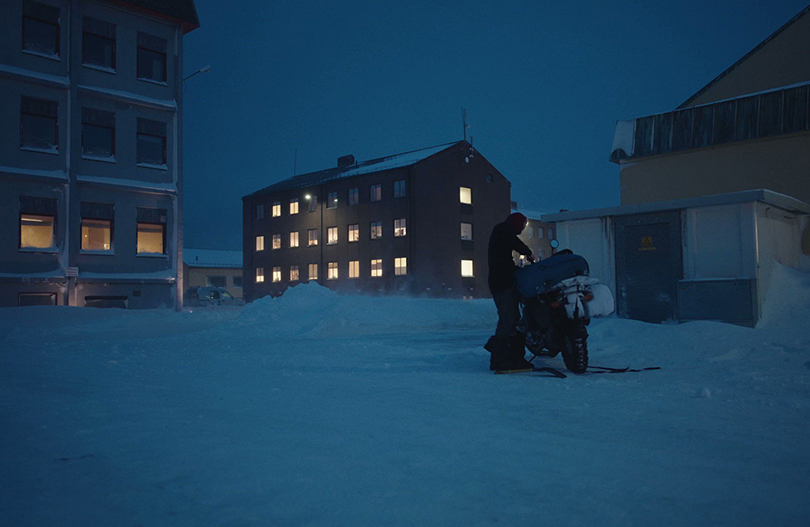
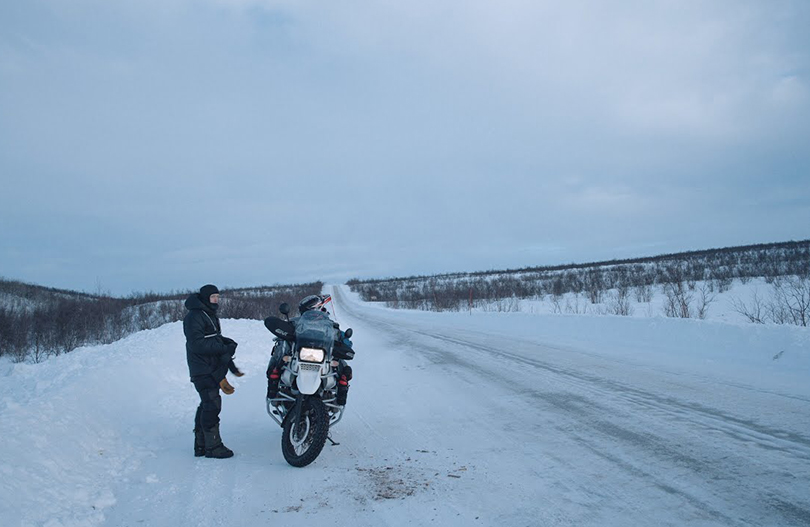
The Vintagent Selects: Inland Road
https://www.youtube.com/watch?v=jnjWzht2HV4
The Vintagent Selects: A collection of our favorite films by artists around the world.
INLAND ROAD aka INLANDSVÄG (Swedish) (2021)
Run Time: 26:39
A Film By: Emil Duvander
Key Cast: Emil Duvander, Mathias Löfquist
FILM MAKERS
Emil Duvander is a digital imaging technician that has worked with a number of production houses. Emil grew up in southern Sweden and comes from a family where his father had a lot of interest in cars, motorcycles, and airplanes, but it wasn’t until he got his motorcycle license at 20 years-old that his obsession with bikes took hold, as he saw it as the perfect tool for traveling. His other motorcycle films include, Blue Mountains In The Arctic (2019), and The Polar Circle (2023).
SUMMARY
Two friends driving across Sweden on the inland road til it's not possible to drive any further.
Watch the FULL FILM.
RELATED MEDIA


The Vintagent Selects: Blue Mountains In The Arctic
https://www.youtube.com/watch?v=kZf_yoUHl30
The Vintagent Selects: A collection of our favorite films by artists around the world.
BLUE MOUNTAINS IN THE ARCTIC (2019)
Run Time: 25:28
A Film By: Emil Duvander
Key Cast: Emil Duvander, Mathias Löfquist
FILM MAKERS
Emil Duvander is a digital imaging technician that has worked with a number of production houses. Emil grew up in southern Sweden and comes from a family where his father had a lot of interest in cars, motorcycles, and airplanes, but it wasn’t until he got his motorcycle license at 20 years-old that his obsession with bikes took hold, as he saw it as the perfect tool for traveling. His other motorcycle films include Inland Road (2021), and The Polar Circle (2023).
SUMMARY
On motorcycles, Emil and Mathias travel from Scandinavian peninsula's southernmost point Smygehuk to the northern point, North Cape. Watch the FULL FILM.
RELATED MEDIA
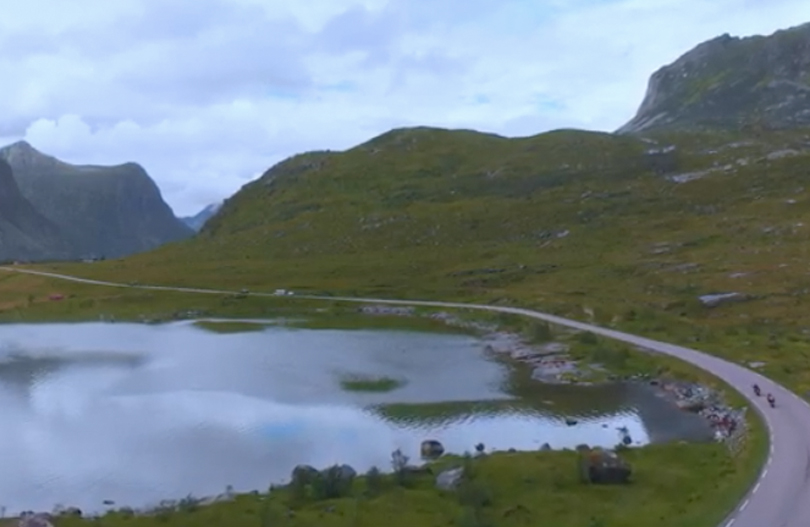
The Vintagent Trailers: Motorcycle Mary
https://www.youtube.com/watch?v=rGaM2Z7CMT0
The Vintagent Trailers: A preview of our favorite feature films out there.
MOTORCYCLE MARY (2024)
Run Time: 22:00
Producer: Rachel Greenwald, Breakwater Studios
Director: Haley Watson
Editor: Cody Wilson
Key Cast: Mary McGee
FILM MAKERS
ESPN Films announced it has acquired the 22-minute documentary short “MOTORCYCLE MARY”, soon to become part of ESPN Films’ 30 for 30 Shorts catalog. Directed by Haley Watson (in her directorial debut), produced by Rachel Greenwald, and executive produced by two-time Oscar® winner Ben Proudfoot and seven-time Formula One World Champion, Lewis Hamilton, “MOTORCYCLE MARY” tells the untold story of legendary motorsports pioneer Mary McGee a.k.a. “Motorcycle Mary”, whose racing career spanned thirty years and saw her shatter gender norms while mastering multiple racing disciplines. The documentary short will feature stunning never-before-seen archival footage and photographs from McGee’s life.
“Mary McGee’s story is not only a testament to her incredible skills and perseverance but also an inspiration to all who dare to break barriers,” says Marsha Cooke, Vice President and Executive Producer of ESPN Films. “‘MOTORCYCLE MARY’ captures her indomitable spirit and the trailblazing legacy she leaves behind in the world of motorsports, and we’re looking forward to bringing it to ESPN audiences soon.”
SUMMARY
Born in Alaska on the eve of World War II, McGee’s early life is riddled with fear but, with her older brother Jim’s guidance, she conquers her apprehensive nature and discovers the art of composure—a skill that serves her to take on the racetrack. Following in her brother’s footsteps, her remarkable racing odyssey begins in the world of cars, where she outshines her male competitors, only to later discover her greatest sense of freedom racing motorcycles. She was the first woman to race motorcycles in the United States. Confronted by sexism and personal tragedy, Mary perseveres, pushing herself to greater and greater heights—culminating in her most hair-raising challenge: Becoming the first person ever to solo the grueling Baja 500 on a motorcycle.
“MOTORCYCLE MARY” is a production of Breakwater Studios.
“MOTORCYCLE MARY” will premiere on the big screen at the 2024 Tribeca Festival in New York where it will make its world premiere in the “Shorts: Personal Best” program on Friday, June 7th (with additional screenings June 13 and 15).
The ESPN premiere will be announced at a later date.
RELATED MEDIA


The Vintagent Selects: Two Wheels And A Crank Camera
https://youtu.be/kKZH66FUZk8
The Vintagent Selects: A collection of our favorite films by artists around the world.
TWO WHEELS AND A CRANK CAMERA (2024)
Run Time: 20:35
Producer: motos e filmes produções & La Mala Suerte ediciones.
Director: Pedro Bruno Rodrigues
Writer: Marina Cianferoni
Key Cast: Marina Cianferoni, Frida (BMW R75/7)
FILM MAKERS
Pedro Bruno Rodrigues (Lisbon, Portugal), is a filmmaker finding untold stories
and recording them into documentary films. Marina Cianferoni (Florence, Italy. She lives in Spain), writer AND rider (and since 2020, an editor) likes to think that for her, the motorcycle has always been a medium with which she has mostly thought, observing life as if through the eye of a camera-car...
SUMMARY
Marina Cianferoni, motorcyclist, journalist and film enthusiast, realized that riding her
motorcycle could represent a different point of view on life and art. In this documentary, she
reveals how her old BMW and her book about motorcycles and movies set her on a different
"road" full of encounters and different experiences, that led her to create with her partner a small editorial press that publishes only books about motorcycles: La Mala Suerte Ediciones.
This film happened because of the passion of two people for the connection between
motorcycles and films. They met by chance while searching for a common ground, Pedro and
Marina join forces to produce a film with the intention to explain how a motorcycle could be
the perfect vehicle for understanding and translating the world of Art and even to realize the
most impossible dreams. Good books and old movies with a motorcycle passing through has often been the perfect representation of the 20th Century, with its mad curiosity for the progress; witnesses of the Past, Present and Future from a dynamic perspective. For Pedro it was a new subject but for Marina it was a lifetime project since everything she saw whilst riding her old bike
was..cinema. The film starts celebrating the importance of a family for sharing arts or passions with, and a passionate way to see life. It shows how an art film made such an impact on Marina’s life
and how she found people as crazy as her about this simple connection, motorcycles &
movies; people who gradually take her to a new life and a new job: an editorial press specialized in books about motorcycles. And finally, the film reveals how only true motorcyclists could deeply feel even the psychological aspects of riding a motorcycle with style and technique, and be truly faithful in writing it down or recording into frames. From this starting point there is still a lot to be done.
RELATED MEDIA
motos e filmes website
Watch Impatience (1928)
[/one_half_last]


The Vintagent Selects: The Ballad of Old Betsy
https://www.youtube.com/watch?v=3eH5gCwNaSE
The Vintagent Selects: A collection of our favorite films by artists around the world.
THE BALLAD OF OLD BETSY: 1966 HARLEY DAVIDSON POLICE SPECIAL (2022)
Run Time: 6:05
Producer: Baikudokan Productions, Van Loom Films
A Film By: Greg O'Keefe
Writer: Greg O’Keefe, Clay Babb
Key Cast: Clay Babb, Betsy (1966 Harley Davidson Police Special)
FILM MAKERS
The video was produced, directed, and edited by Greg O’Keefe of Baikudo™ (Japanese for The Way of the Motorcycle™) Productions, with cinematography by Joel Van Loon of Van Loon Films. The music was created by David Borgeson of Brown Bag Luncheon. Greg, a university professor, spent a few years as a dedicated single dad since losing his wife to cancer in early 2020. He has recently remarried in 2023. He looks forward to creating more motorcycle videos and capturing thrilling action shots on the road. His daughter sometimes comes on shoots with him. Joel, a full-time at-home Dad, shares Greg's passion for videography and also podcasts about fathers raising children in Japan. Additionally, he's a talented jewelry designer.
SUMMARY
Who would have ever imagined finding one of life's great loves in an old barn? That's exactly where Clay Babb first encountered his one and only. When he discovered Old Betsy, she wasn't the beauty she is today. Their journey began with a bumpy ride home, but from that moment on, their bond only grew stronger. Who says love can't transform us? Clay has poured his heart into making Betsy run as smoothly as a dream. The years may have left their mark on her, but the dedication and passion Clay has shown in keeping her running are truly remarkable. This love shows no signs of fading anytime soon.
RELATED MEDIA
Baikudo - The Way of the Motorcycle - Instagram
Baikudo - The Way of the Motorcycle - Youtube
Baikudo - The Way of the Motorcycle - Facebook page


The Vintagent Selects: Big Scottish One
https://vimeo.com/858160969/f3e426a32a
The Vintagent Selects: A collection of our favorite films by artists around the world.
HOWARD + CARTWRIGHT'S: BIG SCOTTISH ONE (2023)
Run Time: 10:57
Producer: Galloping Camel Films
A Film By: Paddy Cartwright
Camera: Paddy Cartwright, Max Howard
Key Cast: Paddy Cartwright, Max Howard
FILM MAKERS
Paddy Cartwright is a Cinematographer based in London, specializing in sports and music imagery. Bog Scottish One won Best Documentary at The Monthly Film Festival, and was an Official Selection at the Vahna Motorcycle Film Festival, Portland Motorcycle Film Festival, and Dubai Motorcycle Film Festival.
SUMMARY
Two lads fuck off on a motorcycle adventure, and find exactly what they were looking for on the incredible roads of Scotland's Highlands.
RELATED MEDIA
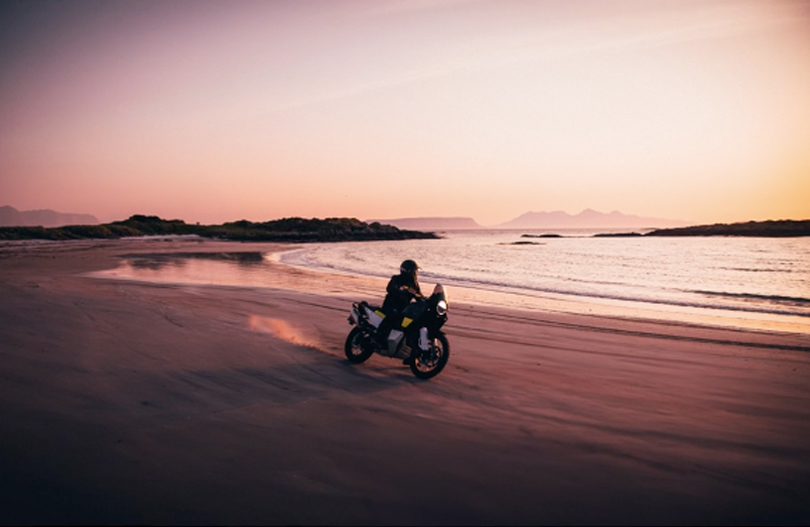
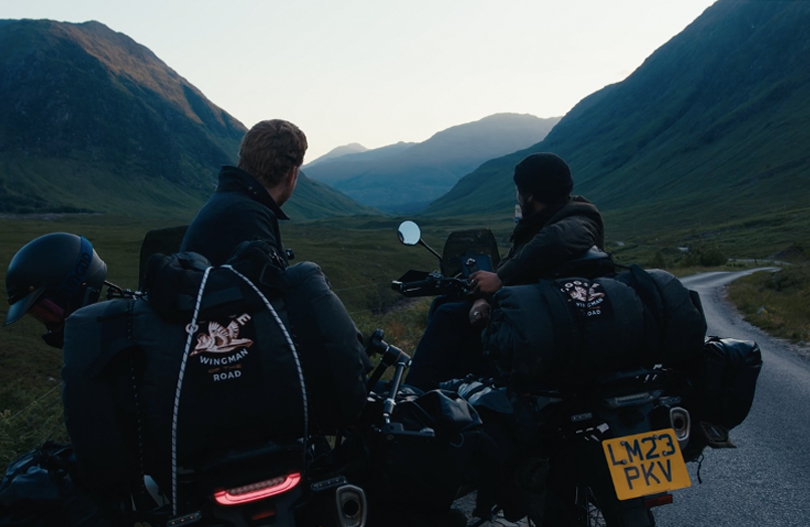
The Vintagent Selects: The Mountain Rally
https://www.youtube.com/watch?v=wsDF8KZhrtA
The Vintagent Selects: A collection of our favorite films by artists around the world.
THE MOUNTAIN RALLY (2024)
Run Time: 12:30
Producer: Bristow Films
A Film By: Charlie Bristow
Editor:
Key Cast:
FILM MAKERS
SUMMARY
100 motorcycles, 2000 km, 6 countries in 6 days, Austria to Monaco. Riding across every highest road and highest mountain pass in each Alpine territory. With a long distance endurance Rally adventure, you need to push your limits and push your boundaries, but you come back a better person.
RELATED MEDIA
Join the next Mountain Rally!
Malle London, The Mile, and more


The Vintagent Selects: Bad Dog
https://www.youtube.com/watch?v=uZLqdnZuT6g
The Vintagent Selects: A collection of our favorite films by artists around the world.
BAD DOG (2023)
Run Time: 2:25
Producer: at Ringling College of Art and Design
A Film By: Erin Malfi
Voice Acting: Mark Hunter
Key Cast: Bad Dog, Grim Reaper
FILM MAKERS
Hi there! My name is Erin, and I am a character designer and 3D animator based in New York.
I am an alumni of Ringling College of Art and Design. I'm passionate about creating characters with life and attitude, and I enjoy incorporating my interests such as alternative fashion, custom vehicles, fantasy, and nature into my designs. When I am not creating art, I'm usually studying animals and spending time in the wild. - Erin Malfi
SUMMARY
Bad Dog is Erin's thesis film in which a motorcycle-riding dog must compete with
the Grim Reaper to save his soul.
RELATED MEDIA
IG @digitalfist
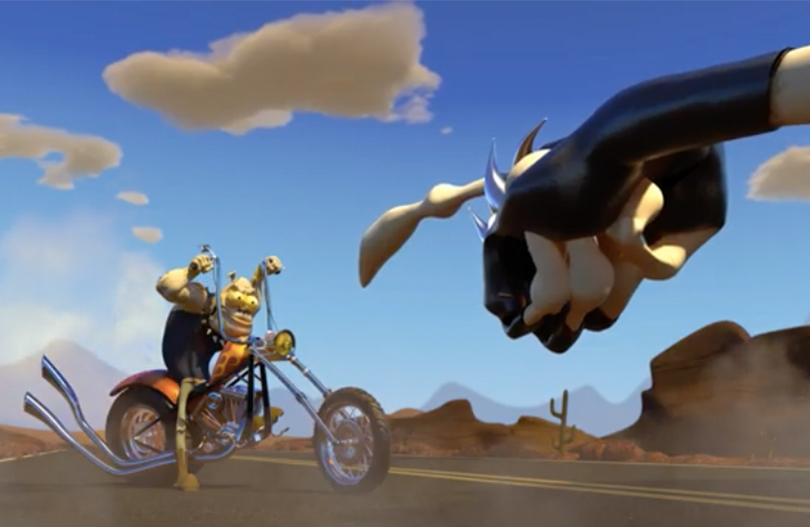
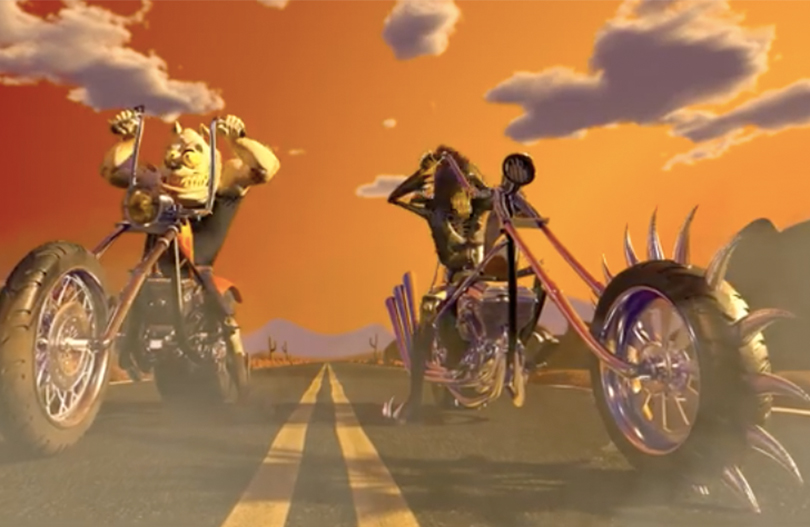
The Vintagent Trailers: A Rally For Rangers
https://www.youtube.com/watch?v=okrI9-UjqzQ
The Vintagent Trailers: A preview of our favorite feature films out there.
A RALLY FOR RANGERS (2022)
Run Time: 54:00
Producer: Mark Fisher, Fisher Creative
A Film By: Erick Daft
Key Cast: The Mongol Ecology Center, Rally For Rangers
FILM MAKERS
Eric Daft is an accomplished director, cinematographer, and editor with a passion for well-crafted compositions, dramatic light, and an eye for unique details. He has traveled the world for over 20 years working with numerous brands and clients capturing stories from the top of Everest to the canals of Venice. Based in Teton Valley Idaho he co-founded Fisher Creative with Mark Fisher where they have produced many award winning documentaries. He is at home in the mountains and his passion for them has brought him to many remote ranges including the Himalayas, Tetons, Andes, Alps, Canadian Rockies, and Alaska. He lives for pre-dawn starts and epic mountain locations.
Equally comfortable in the city or studio he has a way of making clients comfortable and stoked on the Fisher Creative experience!
Rally For Rangers mission is to protect the world’s special places by empowering rangers around the world with new motorcycles and equipment. Rally for Rangers is a project of Mongol Ecology Center (MEC), a 501(c)3 non- governmental organization based in Ulaanbaatar, Mongolia and Tucson, Arizona.
SUMMARY
RELATED MEDIA
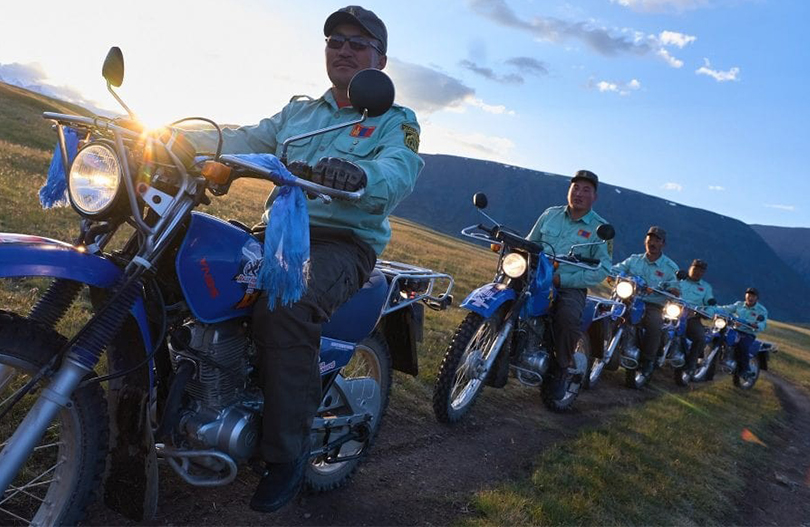
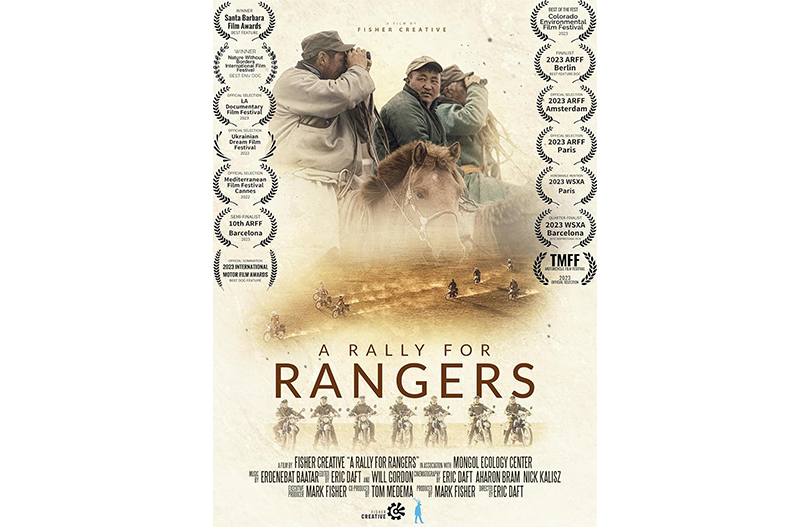
The Vintagent Trailers: Dark Rider
https://www.youtube.com/watch?v=4AmulVFPiYM&t=5s
The Vintagent Trailers: A preview of our favorite feature films out there.
DARK RIDER (2021)
Run Time: 1:31:00
Producer: Ellen De Waele, Elisa Heene, Serendipity Films
A Film By: Eva Kupper
Key Cast: Kevin Magee
FILM MAKERS
Being an avid motorcycle rider as well as passionate documentary filmmaker, I had been waiting for a long time for the right story and the right moment to combine my passion for film and motorcycles. But I never expected to find a story that comes as close to my heart as this one. When I was a child, my older brother Hans became disabled after a terrible accident, and the inevitable difficulties and struggles he has since encountered on his way through life have become an important part of our relationship. - Eva Küpper
Eva Küpper is a Belgian documentary filmmaker who graduated from the Royal Academy of Fine Arts in Ghent. Her film studies provided a broad background in the tradition of both fiction and documentary filmmaking, which becomes apparent in the incorporation of elements of both styles in her films. Alongside her filmic endeavours, Eva holds a position as lecturer at the Centre for Cinema and Media Studies at the University of Ghent and frequently teaches master classes on documentary filmmaking both in Belgium and abroad.
SUMMARY
As a teenager, Australian Ben Felten (51) was diagnosed with a degenerative eye disease that left him fully blind by his mid-thirties. Despite years of hardship and the enormous risks, Ben is determined to pursue his childhood dream of becoming a professional motorcycle racer. Together with former grand prix champion Kevin Magee, he sets out to break the world land speed record and become the fastest blind motorcycle rider in the world. During their journey, Ben and Kevin cross paths with Jed (13), who struggles to find his way in life.
RELATED MEDIA
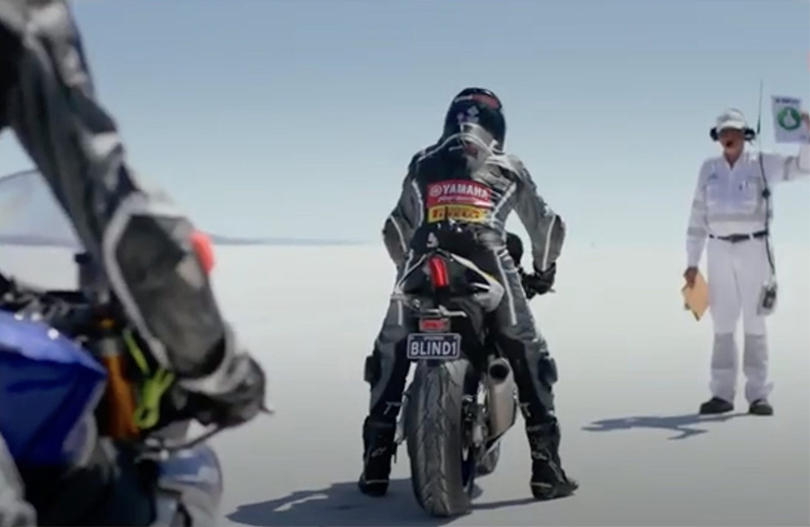
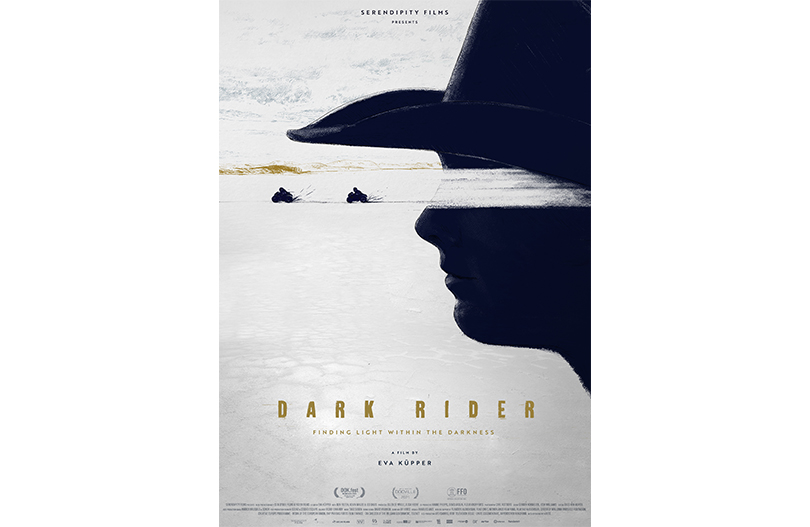
The Vintagent Trailers: Keep The Bike Moving
https://www.youtube.com/watch?v=zVchOGyFEIw
The Vintagent Trailers: A preview of our favorite feature films out there.
KEEP THE BIKE MOVING (2023)
Run Time: 1:25:22
Producer: Life Of Hyphen (Nicholas Harper-Johnston & Michael Boge)
Director: Nicholas Harper-Johnston
Editor: Nicholas Harper-Johnston
Key Cast: Todd Wallace, Scott Wallace, Kevin Dean
FILM MAKERS
Life of Hyphen Productions is a full service film production company specializing in adventure documentaries. In addition to making films, Nicholas Harper-Johnston is also a Wildland Firefighter and Ski Patroller.
SUMMARY
12 friends from North Idaho will try to conquer the impossible and race two bikes across the epic and remote Baja Peninsula of Mexico in the Baja 1000. Going to battle against some of the biggest and baddest motorsports teams in the process.
RELATED MEDIA
Watch the FULL FILM
Follow Life Of Hyphen on Instagram
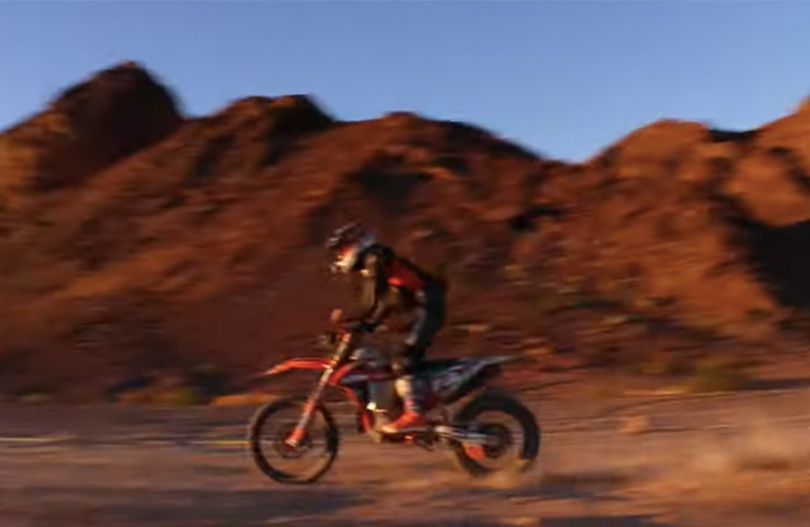

The Vintagent Classics: The Dirt Gang
https://youtu.be/gWKzYAyMSQw
The Vintagent Classics: The films that inspired us.
THE DIRT GANG (1972)
Run Time: 1:29:00
Producer: American International Pictures (AIP)
Director: Jerry Jameson
Writer: Michael DeForrest, Michael C. Healy
Key Cast: Paul Carr, Michael Pataki, Lee de Broux
FILM MAKERS
God Help The Fuzz that flashes a badge on the Dirt Gang!
The timeless story of a filthy biker gang who simply want to pour beer over themselves, terrorize and rape, but mean, normal people always try to spoil their fun. This is the final film from AIP's six-year run of biker films that began in 1966 with Roger Corman's, "The Wild Angels." The Dirt Gang tells the tale of a motorcycle gang who terrorizes a film crew who are in the desert filming a western.
Jerry Jameson is best known (or unknown) as a Director for TV. His credits include Dallas, Dynasty, Walker Texas Ranger, and Murder She Wrote just to name a few. The only two films are The Dirt Gang (1972) and Bat People (1974).
SUMMARY
After a failed gas station robbery that resulted in a shot biker and torched cop car, the gang of "dirt bike gypsies" led by a silver eye-patch wearing whacko named Monk, decide to split to Mexico. Monk lost his eye in a bike crash some years ago and ever since he's been itching to mess up the guy who's responsible.
The gang rides onto a Western Movie set and proceed to wreak havoc until filming halts. The director agrees feed them in the catering tent only on the condition that they split afterwards. Soon the bikers realize that it's the perfect time to pour booze all over themselves.
A stunt man named Zeno, warns script girl Mary that there's trouble brewing. And he's not kidding because soon Monk recognizes Zeno as the dude who caused his eye to pop out! Some years back, when Zeno was riding with the gang, the two of them were in a bike duel. The brutal ritual involved opponents riding towards each other at full speed while swinging motorcycle chains.
With the entire film crew held hostage, Monk will stop at nothing to incite the peace-loving Zeno into another duel—this time to the death! Soundtrack music by the group: The Harvest. Paul Carr, Michael Pataki, Lee de Broux, Jon Shank, Nancy Harris, T.J. Escott, Jessica Stuart, Tom Anders, Joe Mosca, Michael Forest, Jo Anne Meredith. - The Video Beat
RELATED MEDIA
Watch the Full Film at Cine Meccanica
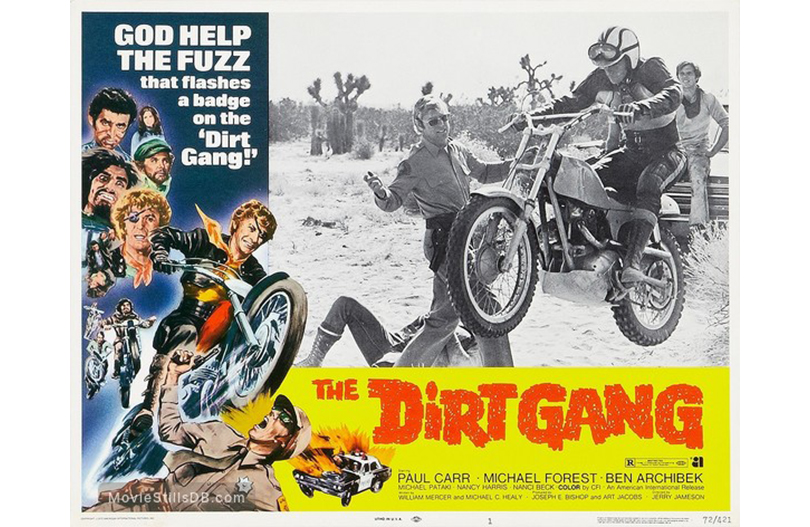
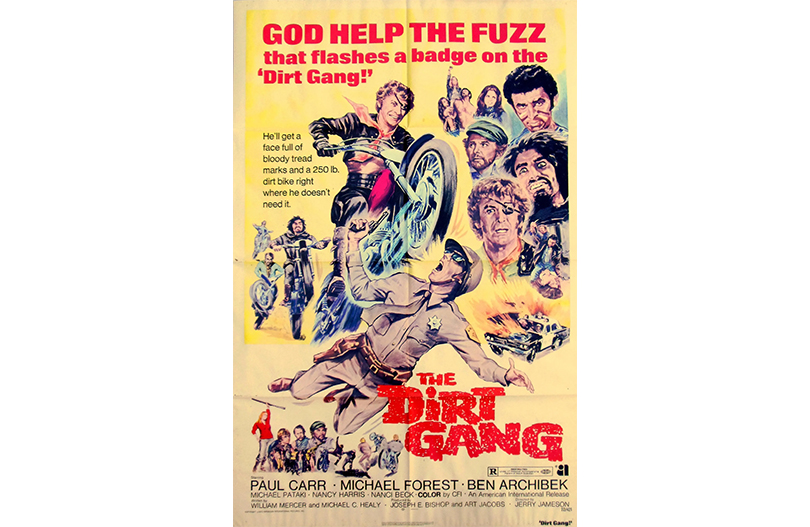
The Vintagent Classics: Stuntman
https://youtu.be/P5ASpt15S8g
The Vintagent Classics: The films that inspired us.
STUNTMAN (1994)
Run Time: 2:15:00
Producer: Poonam Sharma
Director: Deepak Balraj Vij
Writer: Deepak Balraj Vij (story), Salim Hyder (screenplay)
Key Cast: Jackie Shroff, Zeba Bakhtiar, Satish Shah, Tinnu Anand
FILM MAKERS
Stuntman is a 1994 Indian Hindi language "Bollywood" film directed by Deepak Balraj Vij and produced by Poonam Sharma. It stars Jackie Shroff and Zeba Bakhtiar in pivotal roles. It is mainly known for its famous song "Amma Dekh Tera Munda.
SUMMARY
Wealthy Reena falls in love with her brother's (Vijay's) friend, Pune-based Bajrang Tiwari, a motorbike stuntman, much to the chagrin of her widowed mother. When Reena adamantly insists on marrying him, her mother attempts to talk Vijay and Bajrang to stop risking their lives as her husband, as well as Bajrang's dad had lost their respective lives living dangerously. She even wants Bajrang to live with her, but he refuses. The marriage takes place, and Reena re-locates to live in the slums with her husband. Shortly thereafter she gives birth to a daughter, Guddi. Then their lives are shattered after Vijay is killed, and evidence points to Bajrang. Reena leaves him and moves in with her mother and wants Guddi to also live with her. More surprises and shocks await her when she finds that Bajrang has absconded with Guddi and she may never see her child again.
RELATED MEDIA
Watch the FULL FILM on Youtube (subtitles not available anywhere)
